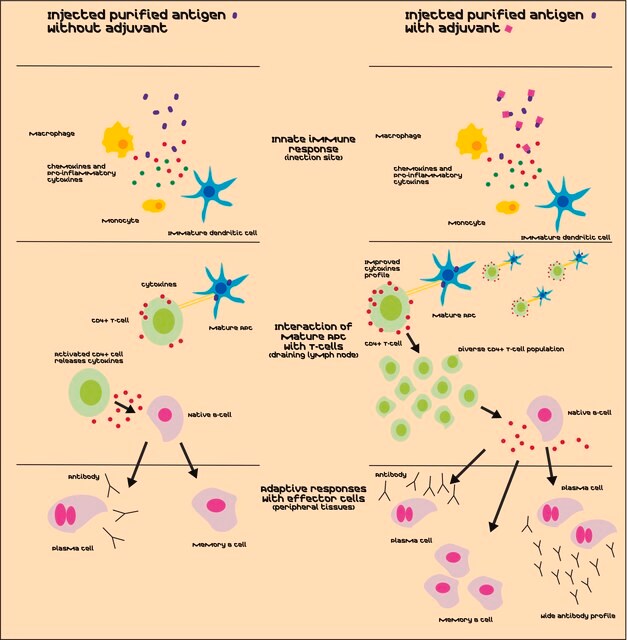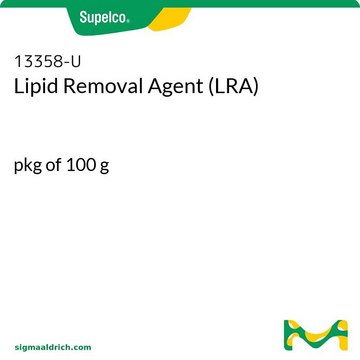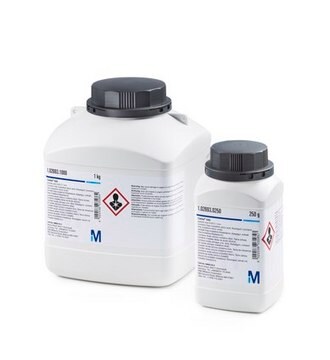Key Documents
525243
Celpure® P300
meets USP/NF testing specifications
Synonim(y):
Diatomaceous earth, calcined
About This Item
Polecane produkty
agency
meets USP/NF testing specifications
Postać
solid
aktywność właściwa
≤1 EU/g (endotoxin)
skład
SiO2, 98.65%
Parametry
0.300 (Permeability(Darcy))
metody
ion chromatography: suitable
zanieczyszczenia
≤0.2% water solubles
≤2.0% acid solubles
≤50 mg non-siliceous content
wielkość cząstki
0.45-0.65 mm
ślady kationów
As: ≤10 ppm (leachable)
Pb: ≤10 ppm (leachable)
ciąg SMILES
O=[Si]=O
InChI
1S/O2Si/c1-3-2
Klucz InChI
VYPSYNLAJGMNEJ-UHFFFAOYSA-N
Szukasz podobnych produktów? Odwiedź Przewodnik dotyczący porównywania produktów
Powiązane kategorie
Opis ogólny
Zastosowanie
Informacje prawne
Hasło ostrzegawcze
Danger
Zwroty wskazujące rodzaj zagrożenia
Zwroty wskazujące środki ostrożności
Klasyfikacja zagrożeń
STOT RE 1 Inhalation
Organy docelowe
Lungs
Kod klasy składowania
6.1C - Combustible acute toxic Cat.3 / toxic compounds or compounds which causing chronic effects
Klasa zagrożenia wodnego (WGK)
nwg
Temperatura zapłonu (°F)
Not applicable
Temperatura zapłonu (°C)
Not applicable
Certyfikaty analizy (CoA)
Poszukaj Certyfikaty analizy (CoA), wpisując numer partii/serii produktów. Numery serii i partii można znaleźć na etykiecie produktu po słowach „seria” lub „partia”.
Masz już ten produkt?
Dokumenty związane z niedawno zakupionymi produktami zostały zamieszczone w Bibliotece dokumentów.
Klienci oglądali również te produkty
Nasz zespół naukowców ma doświadczenie we wszystkich obszarach badań, w tym w naukach przyrodniczych, materiałoznawstwie, syntezie chemicznej, chromatografii, analityce i wielu innych dziedzinach.
Skontaktuj się z zespołem ds. pomocy technicznej




